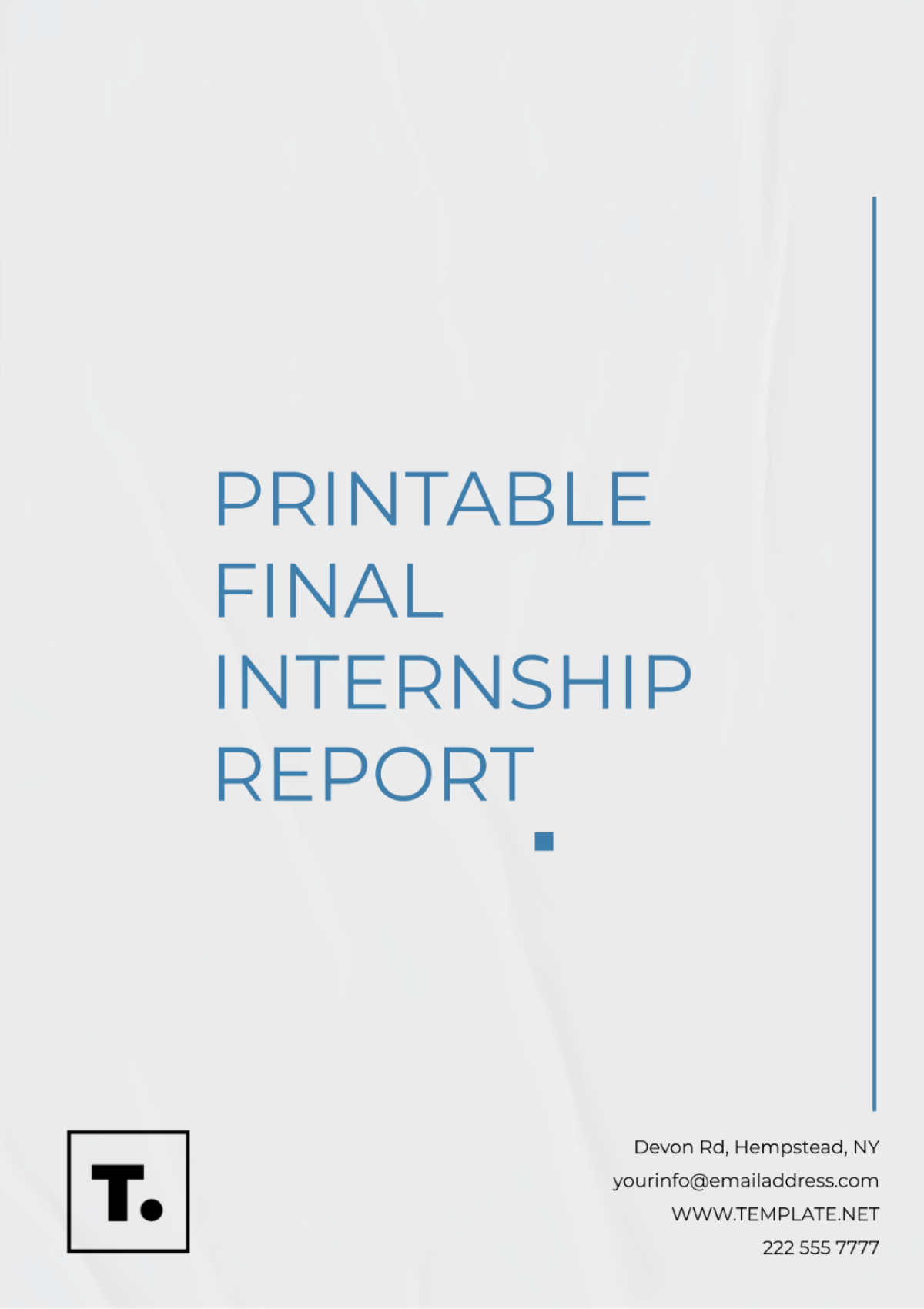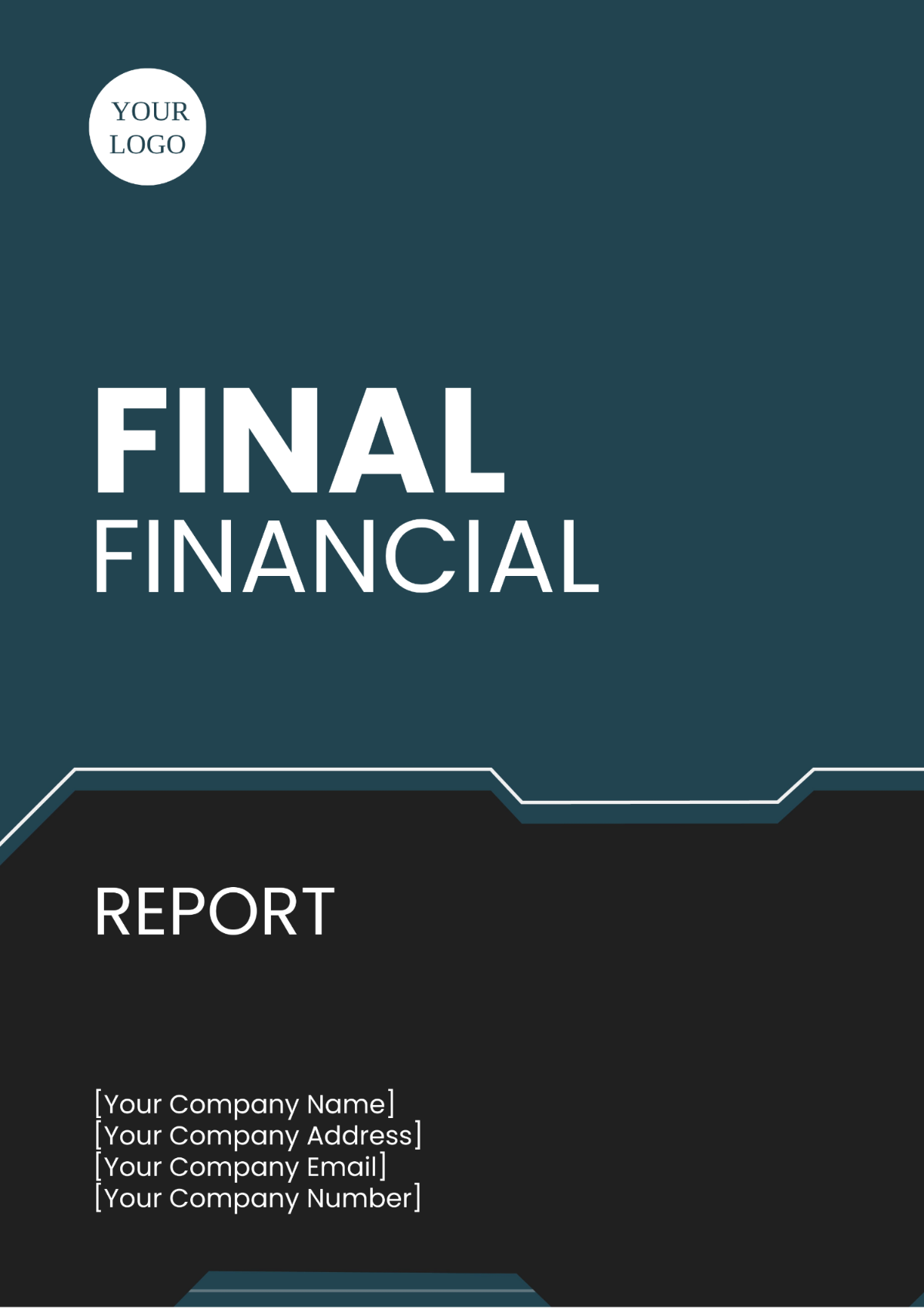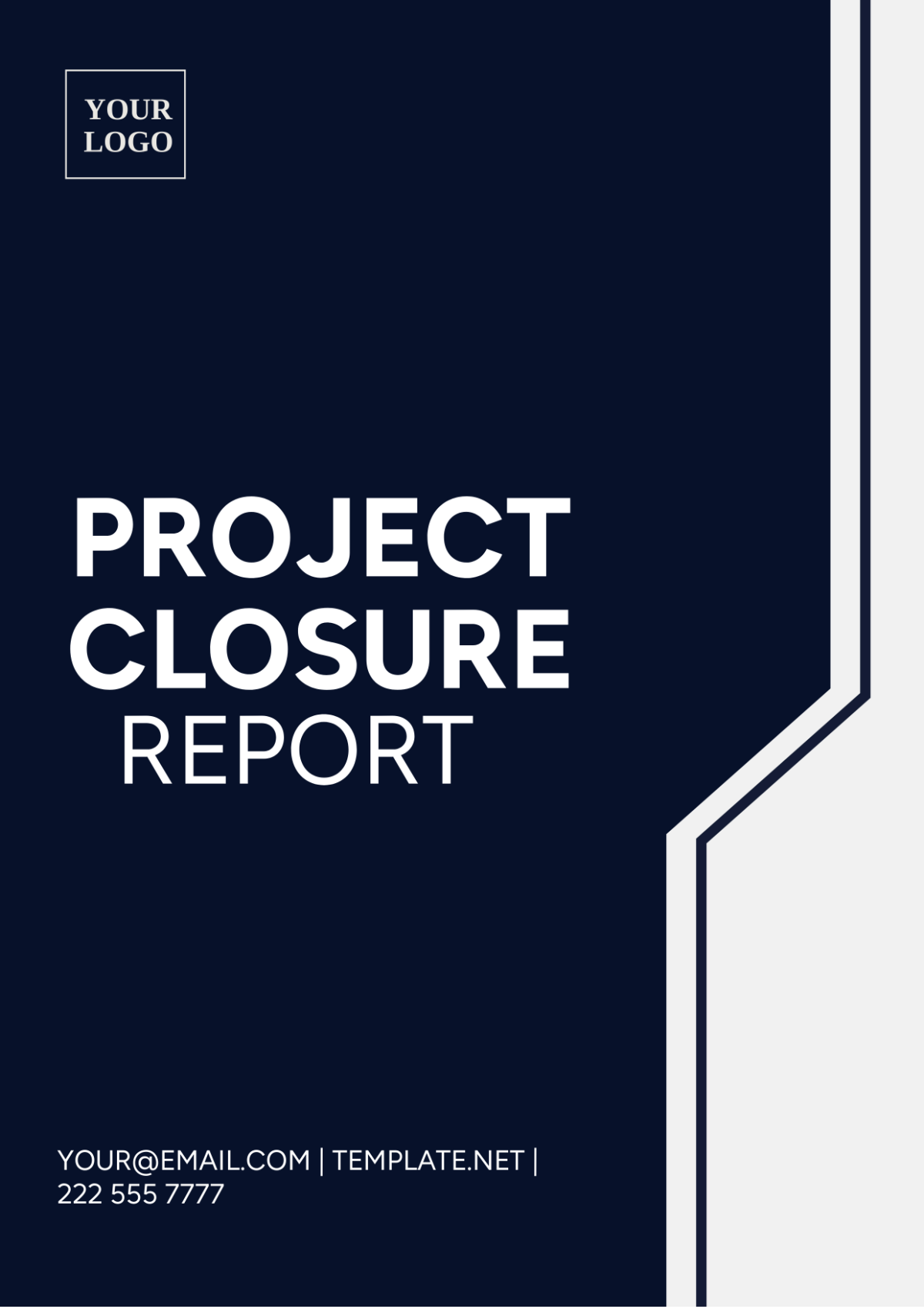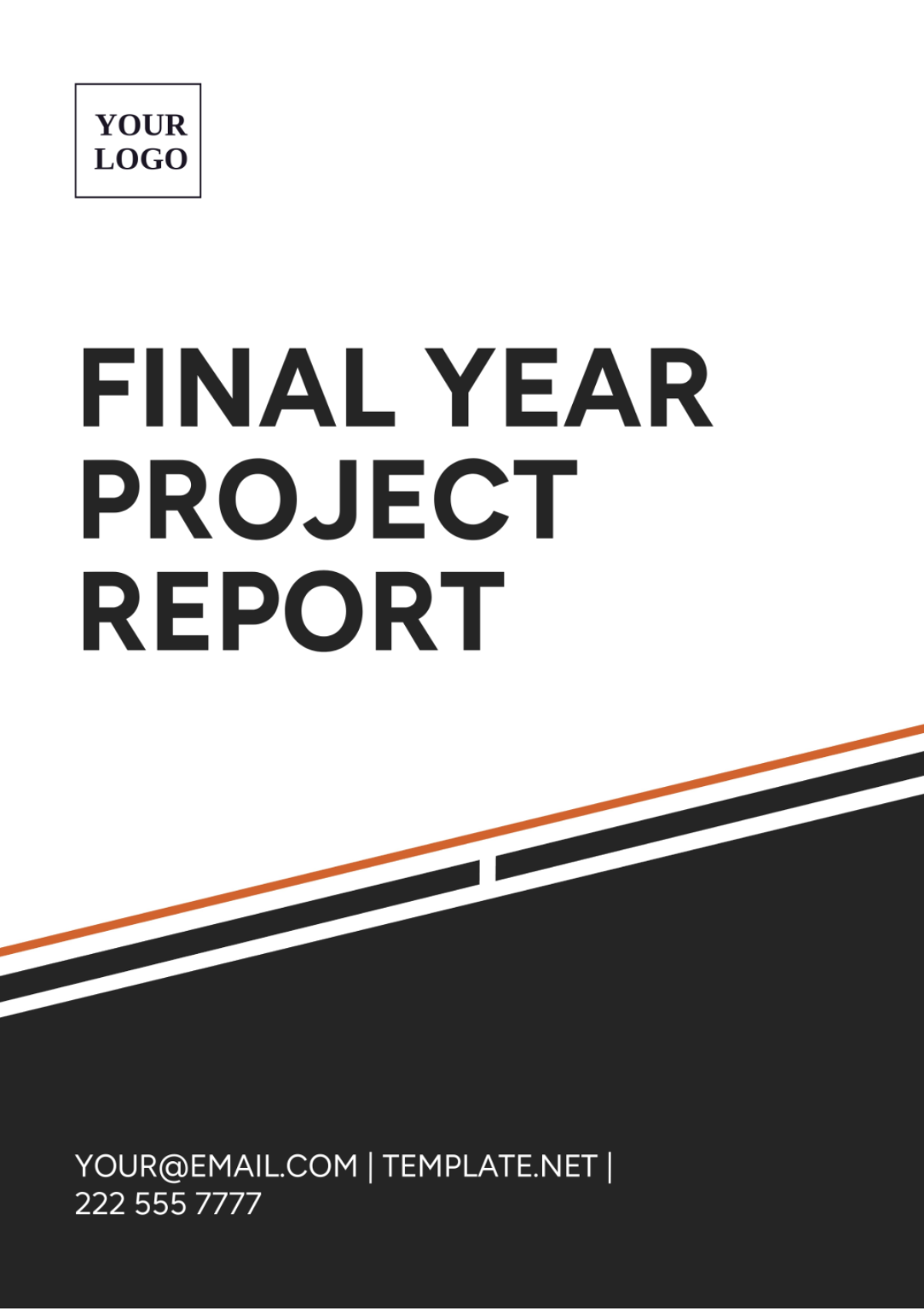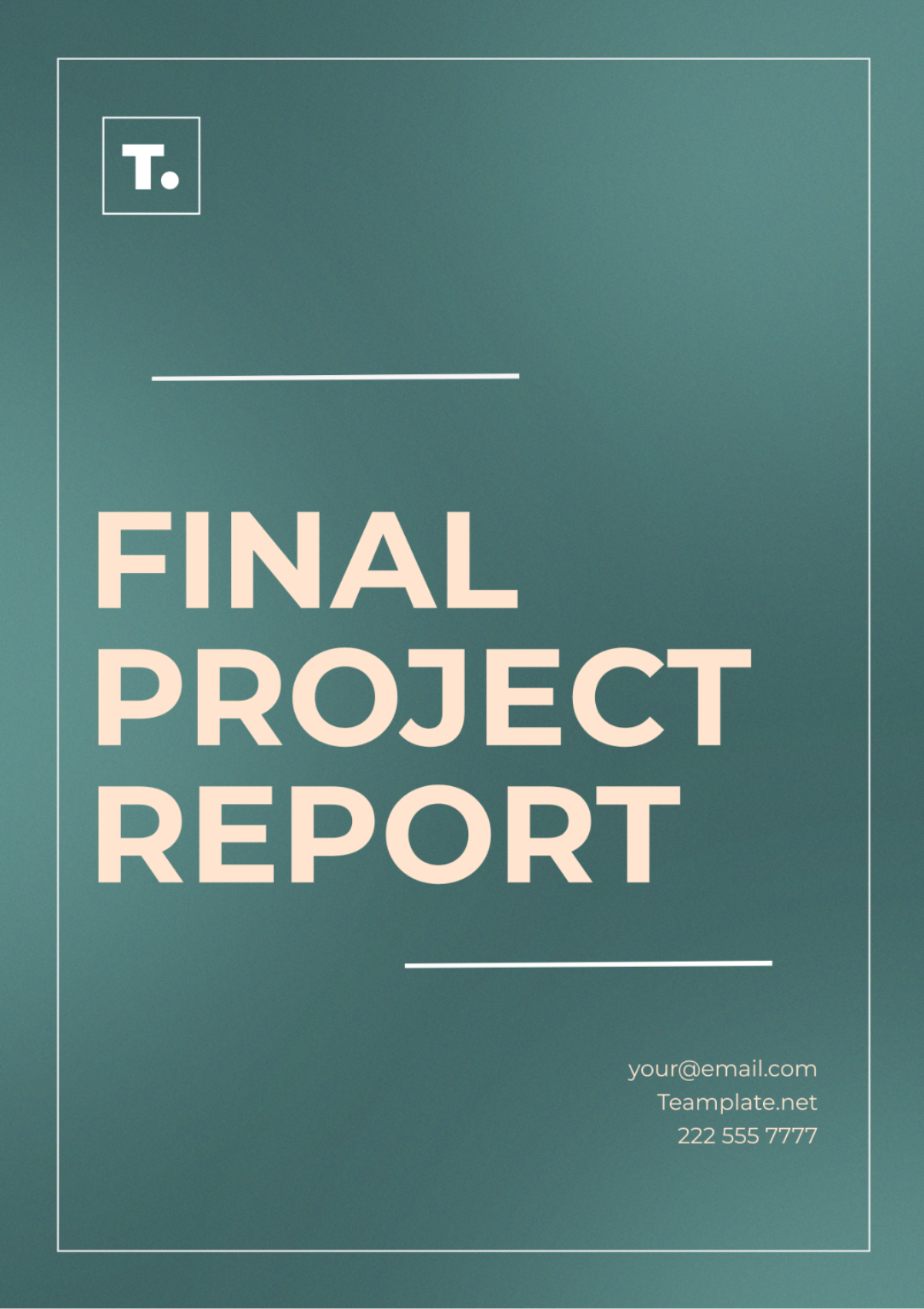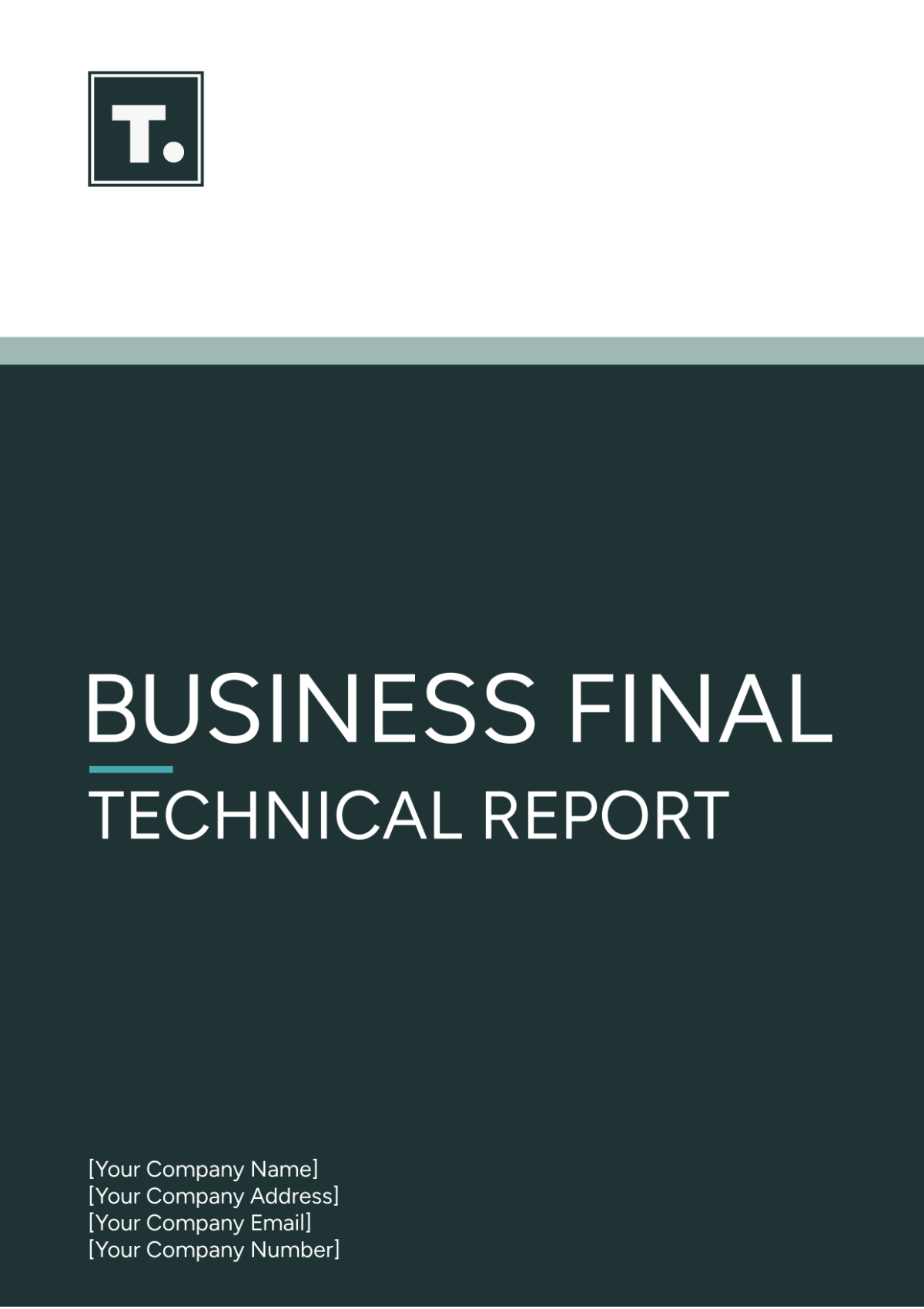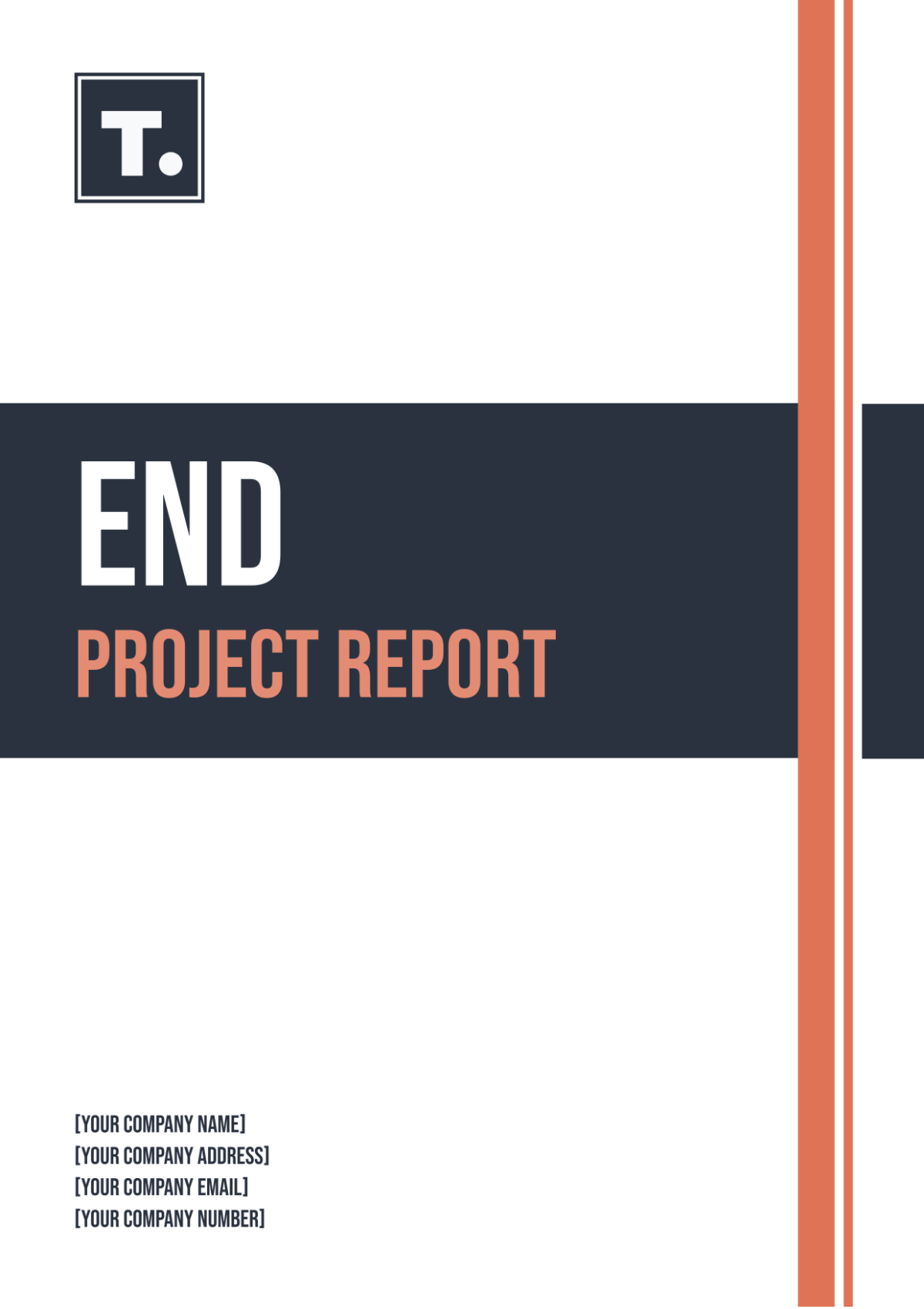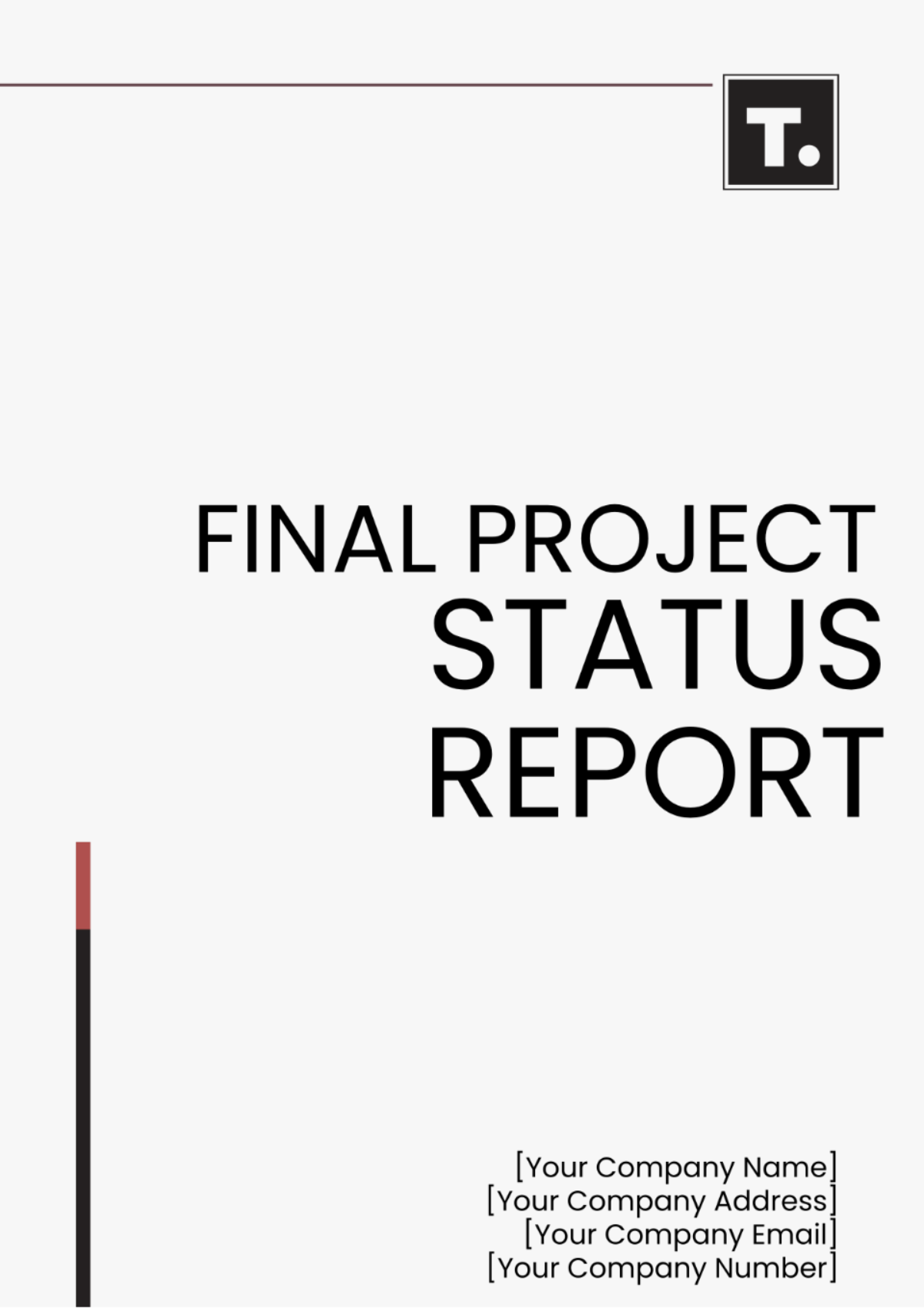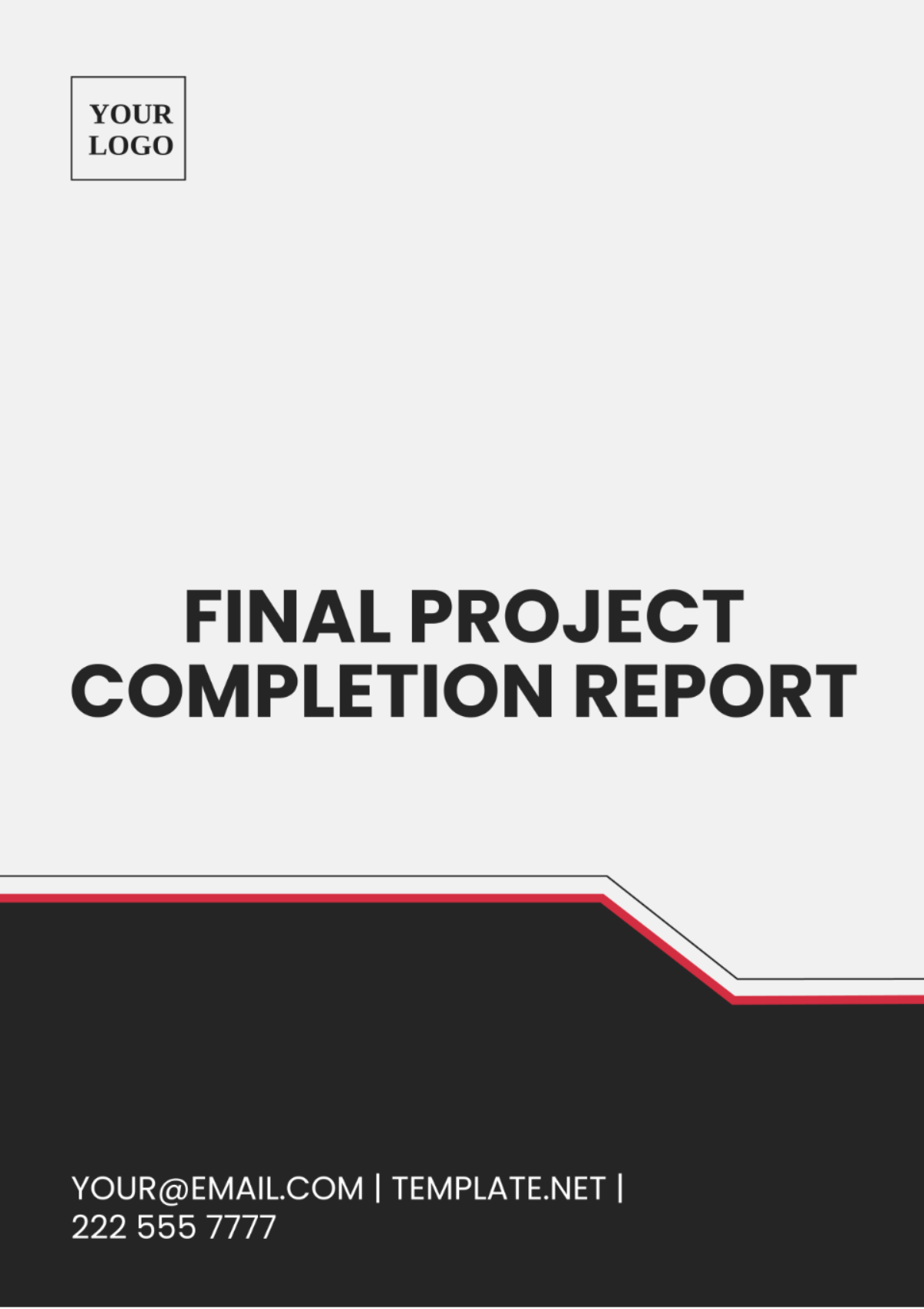Final Project Completion Report
Company: | [YOUR COMPANY NAME] | ||
Prepared by: | [YOUR NAME] | Department: | [YOUR DEPARTMENT] |
I. Introduction
The Final Project Completion Report offers a comprehensive overview of the [PROJECT DETAILS], providing stakeholders with insights into the project's outcomes, achievements, and challenges. This section serves as a brief introduction to the report, setting the stage for the detailed analysis that follows.
II. Project Overview
The Project Overview section furnishes a comprehensive outline of the [PROJECT SCOPE], delineating the project's purpose, goals, and anticipated outcomes. It encapsulates the essence of the project and offers stakeholders a clear understanding of its context and significance within the organization or broader scope.
Project Details:
Project Name: [PROJECT NAME]
Project Objectives: [PROJECT OBJECTIVES]
Project Scope: [PROJECT SCOPE]
Project Duration: [PROJECT DURATION]
Project Scope:
[PROJECT SCOPE 1]: Describe the overarching objectives and scope of the project, elucidating what is to be achieved and the boundaries within which the project will operate.
[PROJECT SCOPE 2]: Outline any specific deliverables, milestones, or targets set for the project to gauge progress and success.
Key Milestones and Deliverables:
[MILESTONE 1]: Highlight major milestones or key deliverables that mark significant progress points in the project timeline.
[MILESTONE 2]: Provide a summary of anticipated deliverables, including their respective timelines and dependencies.
The Project Overview section serves as a foundational component of the report, offering stakeholders a roadmap of the project's objectives, scope, and anticipated outcomes. It provides a reference point for stakeholders to align their expectations and understand the project's trajectory from inception to completion.
III. Methodology
The Methodology section elucidates the approach and techniques implemented to conduct the project effectively. It provides a detailed account of the strategies, tools, and procedures utilized throughout the project lifecycle to ensure its successful execution and completion.
Research Methods:
[RESEARCH METHOD 1]: Describe the primary research methodologies employed, such as surveys, interviews, or case studies, to gather pertinent project data.
[RESEARCH METHOD 2]: Outline any secondary research sources utilized, such as literature reviews or existing data sets, to supplement primary data collection efforts.
Data Collection Processes:
[DATA COLLECTION PROCESS 1]: Explain the procedures followed to collect project data, including the identification of sources, data gathering techniques, and data validation methods.
[DATA COLLECTION PROCESS 2]: Detail any tools or technologies utilized to streamline data collection processes and ensure data accuracy and integrity.
Analysis Techniques:
[ANALYSIS TECHNIQUE 1]: Specify the analytical methods employed to interpret project data and derive meaningful insights, such as statistical analysis, content analysis, or thematic coding.
[ANALYSIS TECHNIQUE 2]: Highlight any software or tools utilized for data analysis, including data visualization tools or statistical software packages.
The Methodology section serves as a roadmap for understanding how the project was executed and how project data was collected, analyzed, and interpreted to achieve the project objectives.
IV. Findings
The Findings section unveils the [RESULTS] unearthed during the course of the project, shedding light on critical insights and noteworthy observations. It offers stakeholders an in-depth comprehension of the project's outcomes, impacts, and implications for future endeavors.
Key Insights:
[KEY INSIGHT 1]: Present pivotal findings or discoveries that emerged from the project's execution, elucidating their significance and relevance to the project objectives.
[KEY INSIGHT 2]: Highlight additional insights or revelations gleaned from the project data analysis, providing stakeholders with valuable perspectives on project performance and outcomes.
Observations:
[OBSERVATION 1]: Outline notable observations or trends identified during the project, offering stakeholders a nuanced understanding of the factors influencing project dynamics and outcomes.
[OBSERVATION 2]: Expand upon any unexpected or unforeseen findings encountered during the project, addressing their implications and potential impact on future project initiatives.
The Findings section serves as a critical component of the report, synthesizing project data and analysis to unveil key insights and observations that inform stakeholders' understanding of the project's outcomes and impacts. It empowers stakeholders to make informed decisions and strategic choices based on a comprehensive understanding of the project findings.
V. Recommendations
The Recommendations section furnishes actionable [SUGGESTIONS] gleaned from the findings and analysis of the project. It offers stakeholders strategic guidance on enhancing project outcomes and mitigating potential risks in future endeavors.
Strategic Guidance:
[STRATEGIC GUIDANCE 1]: Provide actionable suggestions or recommendations derived from the project's findings and analysis, focusing on areas of improvement or optimization to enhance project performance.
[STRATEGIC GUIDANCE 2]: Offer strategic insights or advice on mitigating potential risks identified during the project, outlining proactive measures to safeguard against future challenges.
Improvement Opportunities:
[IMPROVEMENT OPPORTUNITY 1]: Highlight opportunities for process optimization or refinement based on the project's outcomes, emphasizing areas where efficiency gains or cost savings can be realized.
[IMPROVEMENT OPPORTUNITY 2]: Identify areas for skill development or capacity building within the project team, recommending training initiatives or skill enhancement programs to bolster project capabilities.
The Recommendations section empowers stakeholders with actionable guidance and strategic insights to drive continuous improvement and success in future projects. By leveraging the lessons learned and insights gleaned from the current project, stakeholders can chart a course toward enhanced project outcomes and sustained organizational success.
VII. Conclusion
In conclusion, the Final Project Completion Report provides a holistic overview of the [PROJECT DETAILS]. It summarizes the project's journey, from inception to completion, and offers valuable insights for stakeholders to reflect on and apply in future endeavors.
